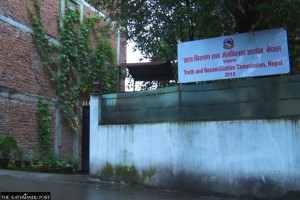Opinion
Pap knows best
Health education plays a major role in cervical cancer prevention and early diagnosis
Bandana Neupane
A Pap smear is a test that helps to find abnormal changes in cells early and avoid the unforeseen danger of cervical cancer at its late stage. Cervical cancer kills more women annually than childbirth. Currently, about 230,000 women die of cervical cancer annually, and nearly 80 percent of these deaths occur in under-developed and poverty-stricken countries. It is the second most common form of cancer in women after breast cancer. The cancer is caused by a virus called human papilloma virus which produces lesions on the cervix which, if left untreated, can develop into cancer.
The Papanicolaou test (also called Pap smear, cervical smear or smear test) is a screening test to detect premalignant and malignant (cancerous) processes in the ecto-cervix. Significant changes can be treated, thus preventing cervical cancer. When taking a Pap smear, a speculum and a spatula are used to gather cells from the outer opening of the cervix and the endo-cervix. The cells are examined under a microscope to look for abnormalities. The test remains an effective and widely used method for early detection of pre-cancer and cervical cancer.
Early testing
In countries where Pap tests are routine, it is recommended that females aged 18 to 65 who have had sex seek regular testing. Guidelines on frequency vary from annually to every five years. If the results are abnormal, and depending on the nature of the abnormality, the test may need to be repeated in six to 12 months. If the abnormality requires closer scrutiny, the patient may be referred for a detailed inspection of the cervix by colposcopy. Screening guidelines vary from country to country. In general, screening starts about age 20 or 25 and continues until about age 50.
Population-based cytological screening and early treatment reduces morbidity and mortality associated with cervical cancer. Lack of knowledge has been found to be the main reason for not having a screening.
The reasons for non-participation include administrative failures, unavailability of female screeners, inconvenient clinic hours, lack of awareness of the test indication and benefits, assumption that there is no risk of developing cancer.
A study done recently among female respondents of reproductive age attending the Gynecological OPD at a hospital in Kathmandu revealed that the practice of having a test was high among those aware of it. Hence, we can say that health education is playing a major role in cervical cancer prevention and early diagnosis. The objective of the study was to identify knowledge and practice levels among respondents. Data was collected using a questionnaire and a qualitative study was done using face-to-face in-depth interviews to investigate knowledge, attitudes and beliefs regarding cervical cancer screening among reproductive women in Kathmandu.
The study
During the study, many women did not have a clear understanding of the meaning of an abnormal cervical smear and the need for early detection. Many believed that the purpose of the Pap smear was to detect existing cervical cancer, leading to the belief that a test was not required because the respondents had no symptoms. The findings highlight the importance of emphasising accurate information about cervical cancer and the purpose of the Pap smear when designing interventions aimed at improving cervical cancer screening for Nepali women.
Among the respondents, 70 percent were from urban areas and 30 percent from rural areas, 88 percent were married, 26 percent had not finished SLC and more than 8 percent were illiterate. While assessing the level of knowledge of the subject, it was noticed that 88.89 percent had heard of cervical cancer. With regard to risk factors for cervical cancer, 15.6 percent said early marriage, 30.2 percent said bearing many children, 26 percent said having multiple sex partners and 16.7 percent said smoking and tobacco.
Likewise, 97.5 percent of the respondents said cervical cancer could be prevented and 31.4 percent said regular gynecological check-ups and Pap smear test could prevent it. Similarly, 80 percent of the respondents had heard of the Pap smear and 52.5 percent had had one. When asked for the reason for not having a test, 50 percent said they didn’t have any problems and 32.14 percent said they didn’t know about it. Hypothesis testing using a chi-square test has also shown that “there is association between the education level, knowledge of respondents and their practice regarding pap-smear test.” Therefore, this study concluded that the practice of Pap smear can be increased among the general public by focusing on health education.
As per the findings of this research, very few people have knowledge of cervical cancer and Pap smear. Also, the practice rate is low among respondents. So, health education should emphasise several aspects such as purpose and benefit, risk factors and nature of cervical cancer, availability of the service and a correct explanation of the Pap smear procedure will increase women’s knowledge and motivate them to accept the test. Also, future researchers can conduct such types of research with respondents from both urban and rural settings as a comparative study. It can also be done on a large scale by increasing the sample size for more accuracy and reliability. The findings of this research may be helpful to health workers and can be used as a guideline to disseminate information to more people, thereby increasing public awareness.
Neupane is a nursing professional at the Tribhuvan University Teaching Hospital




 21.75°C Kathmandu
21.75°C Kathmandu












